FORMAT



Skills to navigate challenging conversations
About this Resource
This e-learning resource has been developed to assist nurses to enhance their communication skills in challenging conversations with patients and families facing a life–limiting illness. It has been created by A/Prof Amy Waters, palliative care physician and Sue Morris, palliative care clinical nurse educator at St George Hospital, Sydney NSW using funding from the NSW Ministry of Health through the NSW Health Palliative Care Education and Training Program, supporting the workforce to enhance knowledge and skills in palliative care.
What can I learn?
The module covers four key communication skills that can be used in a range of challenging clinical interactions. While this resource has been designed for nurses, the skills covered can be useful for any clinician and can be used not only in conversations around life–limiting illness but in other challenging clinical conversations and even in conversations in our daily lives.
The module should take 30-60 minutes to complete. At the end of this module you should be able to apply these communication skills in your clinical practice.
Communication as a key clinical skill in nursing practice
Communication is deemed a core competency within the Nursing and Midwifery Board of Australia ‘National Competency Standards for Registered Nurses’ and good communication is not only essential for effective, compassionate and patient-centred nursing practice but is inherently linked to safety and quality in healthcare
Communication between nurses, their patients and families often occur simultaneously with other nursing tasks such as medication administration, health care education or personal care. This means nurses spend more time than other health care professionals with patients and are in a unique position to recognise and respond to psychosocial concerns which can add valuable information to the clinical data we collect about a patient.
However, research has highlighted nurses often lack confidence with verbal interactions and their ability to meet patients’ psychosocial needs. Communication with patients and families with life–limiting illness, dealing with heightened emotion, identifying goals of care, and discussions around prognosis and end of life care were cited as being particularly difficult
.
Conversations about life–limiting illness and end of life care are challenging. They can involve intense emotion, which we often feel under–equipped to deal with. Talking to an emotional patient or family member can bring on our own emotional reactions. Discussing end of life issues can be confronting for us as well as our patients. The skills we will cover in this e-learning course can help nurses navigate these difficult conversations effectively and efficiently.
Skills to navigate challenging conversations
Four key communication skills
In this resource we will cover 4 key communication skills





Ask-Tell-Ask

Tell me more

Noticing Cues

Responding to Emotion
For each skill, there is a brief description and its rationale. Video scenarios demonstrate how these skills can be used in a clinical interaction and questions throughout the resource help to cement your learning.
Skills to navigate challenging conversations
Let’s start by looking at some common myths about communication skills.
Common Myths
Roll your mouse over some of these misconceptions to see the real truth of things.
'Communication skills can’t be taught – you either have it or you don’t'
Communication can be taught and learned through formal training. Communication can be broken down into a set of skills which we can learn to use intentionally. We can also expand our skillset through communication skills training.
'The more senior you are, the better you are at communicating'
Communication skills aren’t correlated to seniority. Many junior clinicians have excellent communication skills and some senior clinicians have merely repeated unskilled behaviour over the years. No matter how senior you are, you can always improve your communication skills.
'I don’t have time to have these conversations'
Using the skills that we will cover makes communication more efficient as well as more effective. There are times where these conversations take time but it is also common for these conversations to take a matter of minutes using the skills that we will discuss.
'I will make people more upset by talking about difficult topics'
We can’t harm people by exploring emotions and patients and families want us to be able to talk about difficult topics. In fact, greater empathy leads to better patient outcomes. Of course, these conversations can be emotional - the skill is to learn to be comfortable with emotion and develop your skills around responding to that emotion.
'I might not be able to cope myself if I have these conversations'
Good communication skills decrease clinical burnout, increase job satisfaction and reduce complaints. These conversations can be emotional for us too and at the same time, the reward of a patient opening up, thanking us or just knowing that we have provided excellent care helps balance that emotion. If you do need support after a challenging conversation, your team leader, your manager or your Employee Assistance Program are good places to start.
Skills to navigate challenging conversations
Ask - Tell - Ask
In health, we often spend a lot of time TELLING people medical facts.
Ask – tell – ask gives us a structured approach which makes the conversation more efficient and effective.
BEFORE we give tell patients any information, we ASK what they know about the situation already.



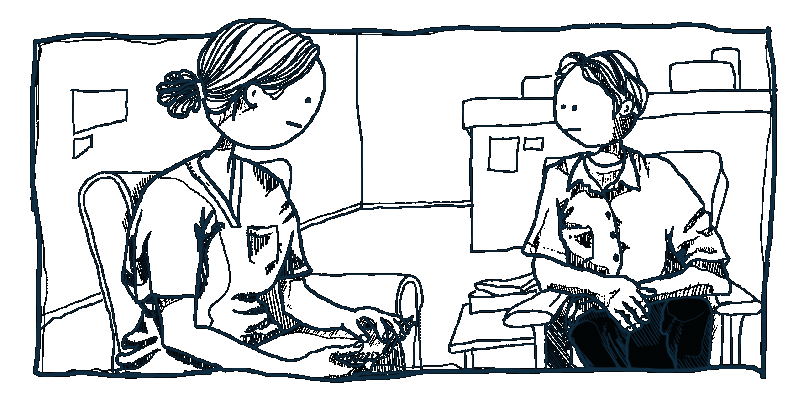


When we tell people medical information it is important to remember some key skills
- Avoid jargon
- Keep information concise
- Take it slowly – a few facts at a time then pause
- Give information that is tailored to their understanding
As nurses, you can use these skills when reinforcing what your patients have been told by the medical team, when giving patient education or when talking about care planning.




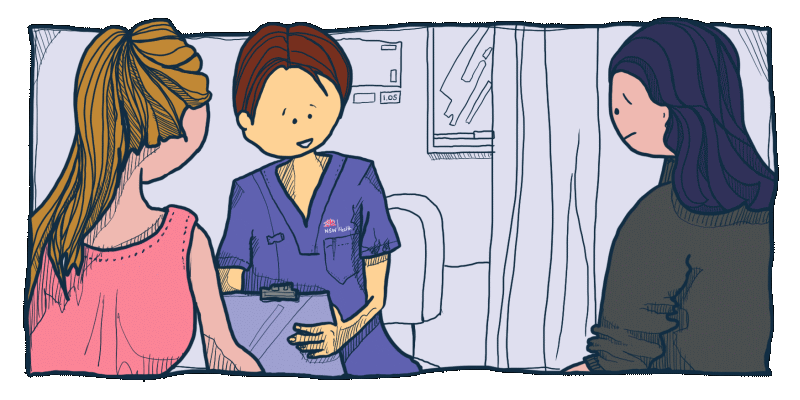

The final ask makes sure that the patient or family has understood the information we’ve given.
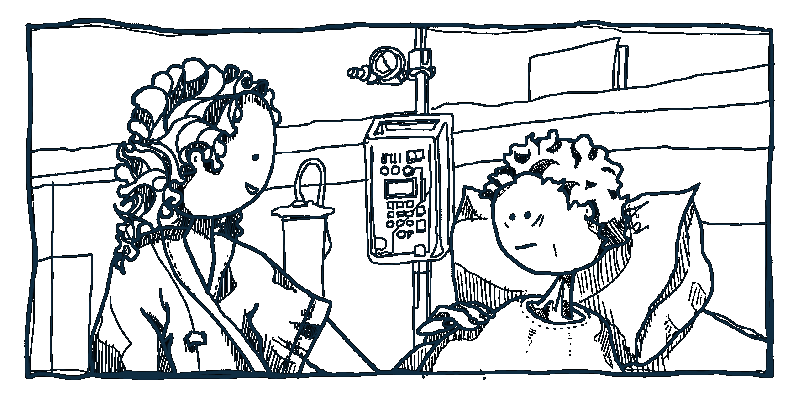
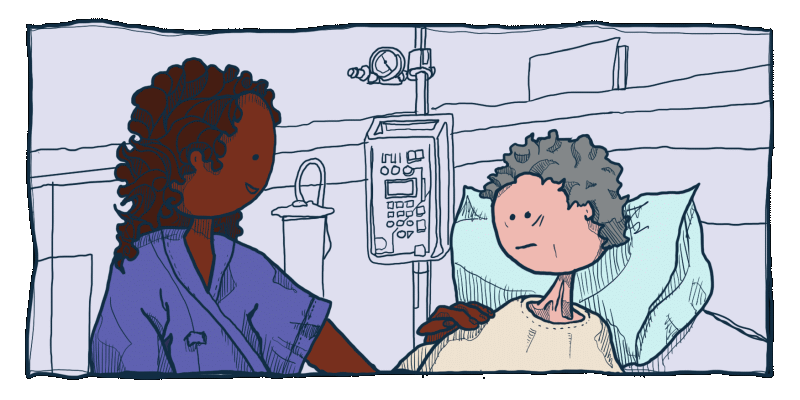
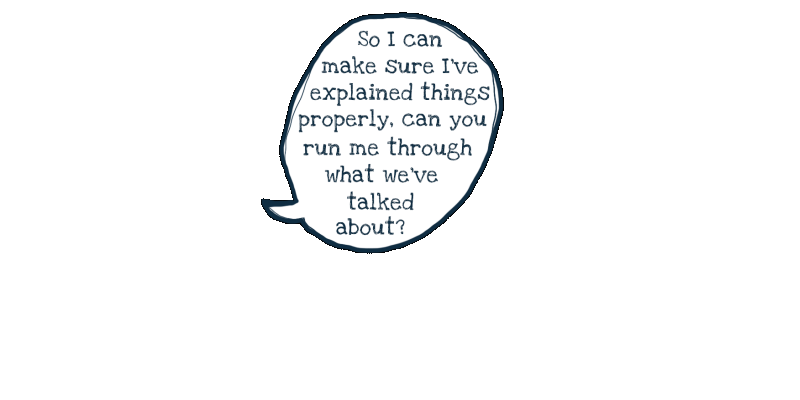

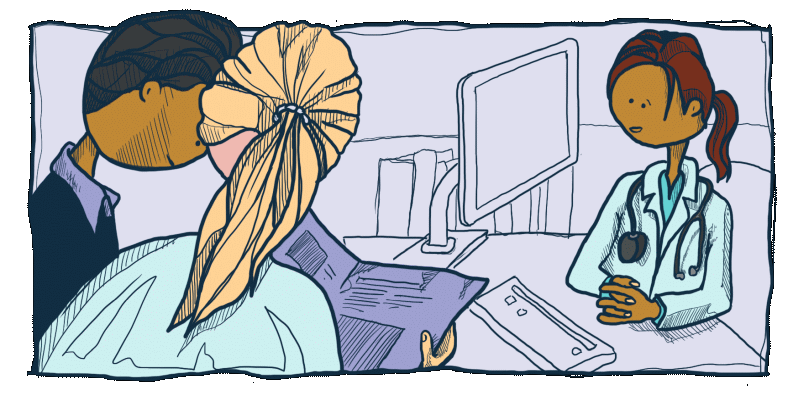

Why is this important?
Why is this important?
Skills to navigate challenging conversations
Tell me more
We can use the phrase ‘tell me more’ whenever it isn’t clear what our patients are trying to say or what is happening for them emotionally.

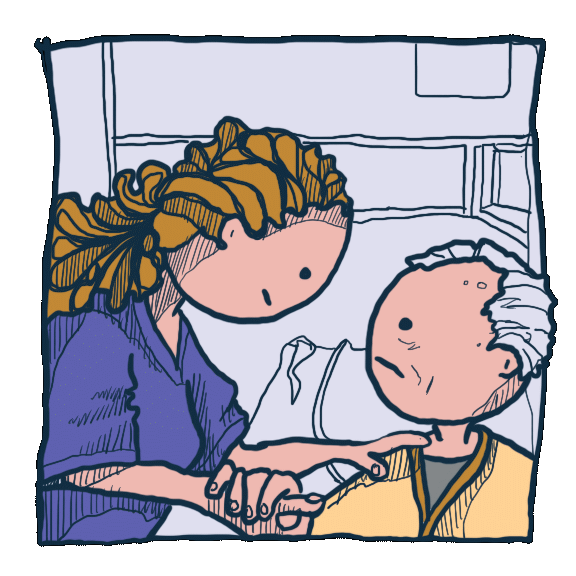


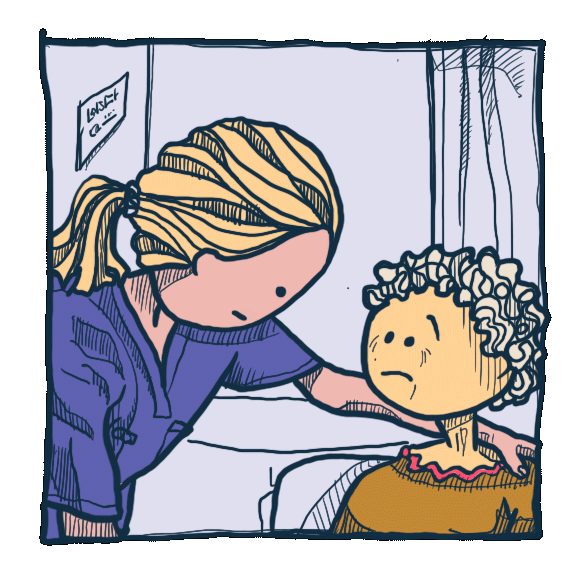

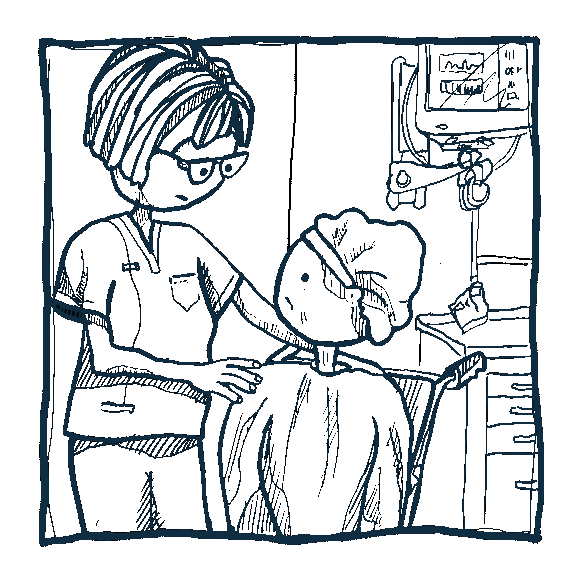
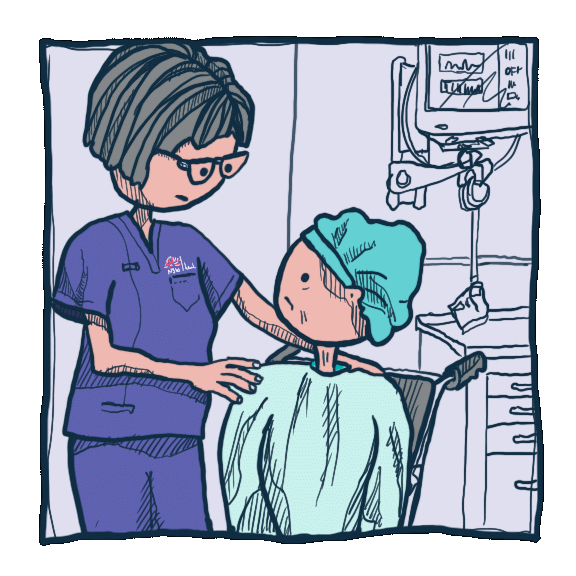

Instead of:

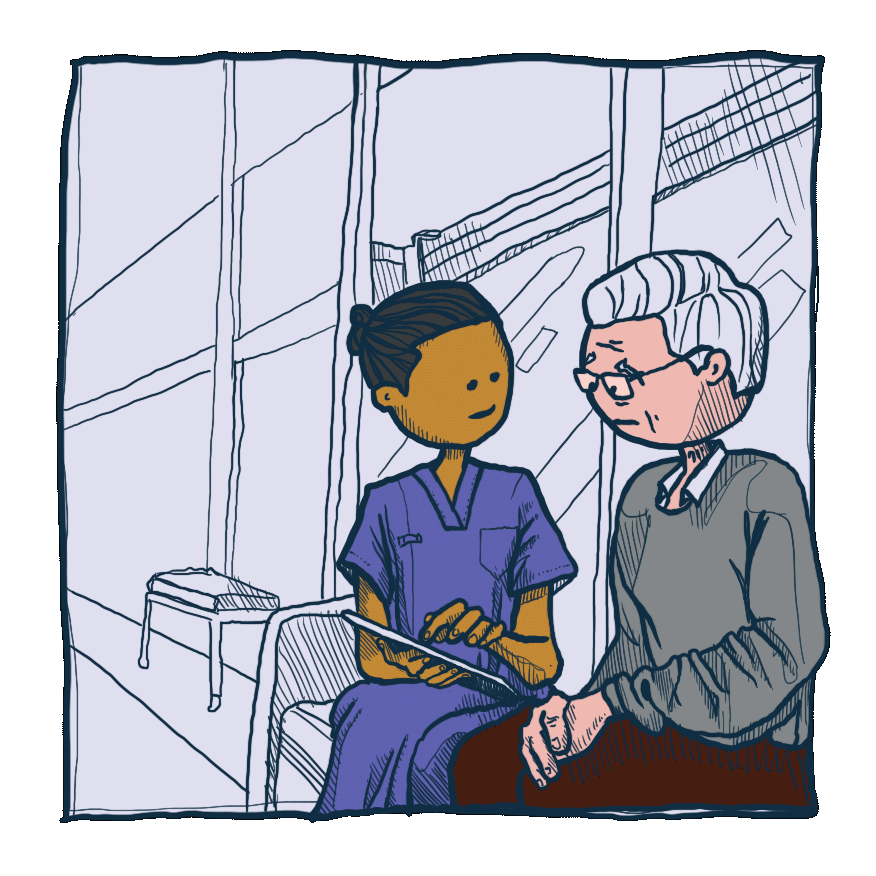
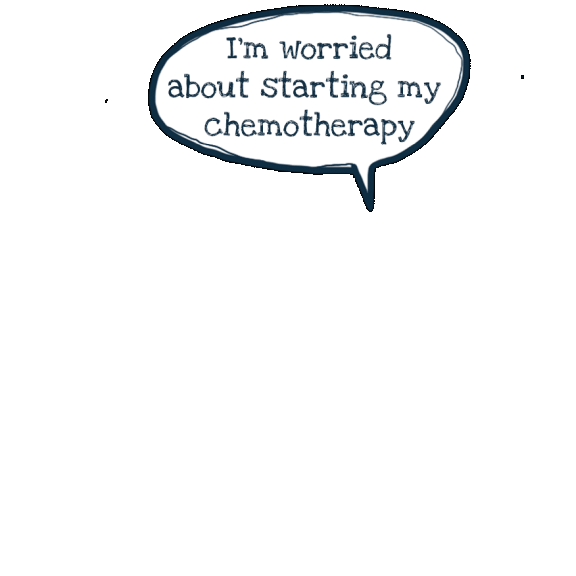





You might try:

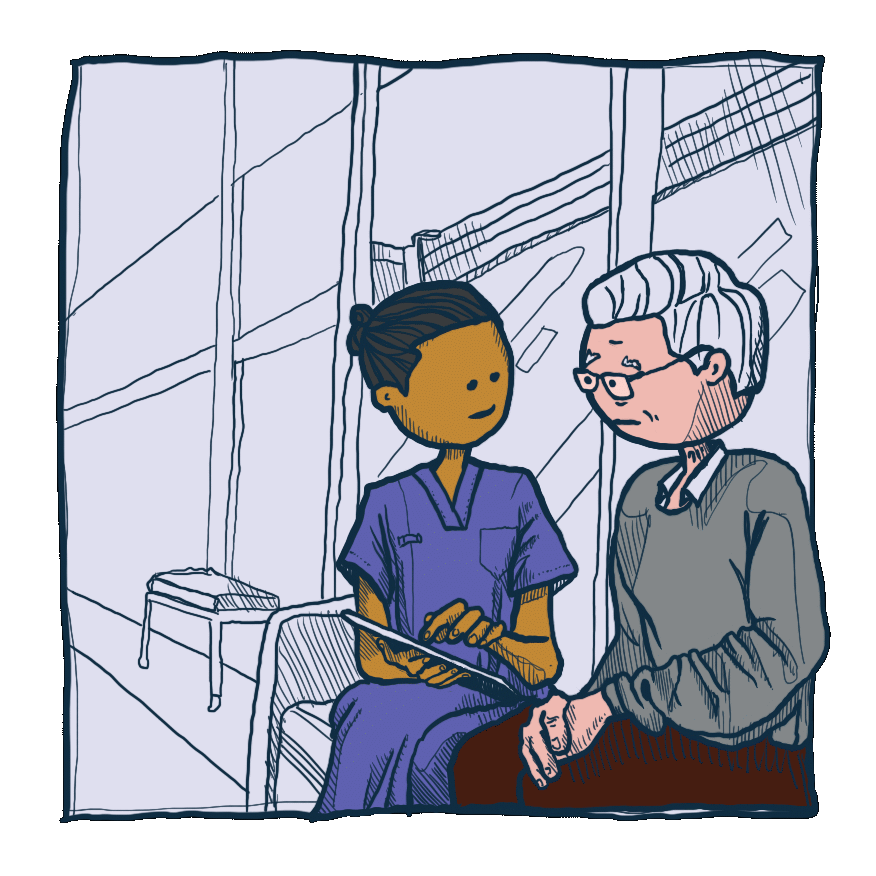
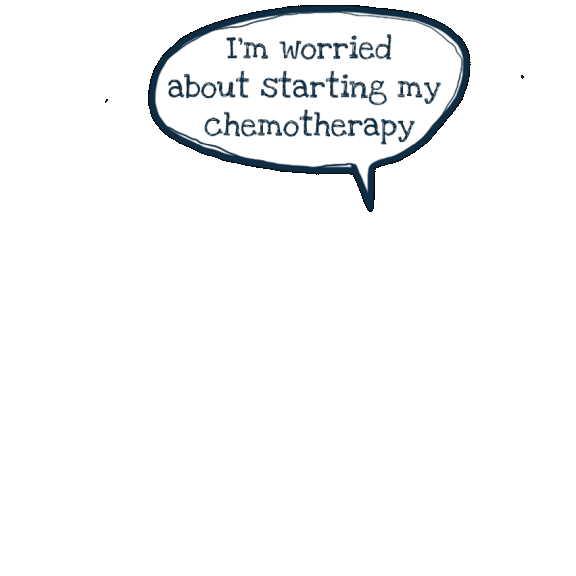





Instead of:

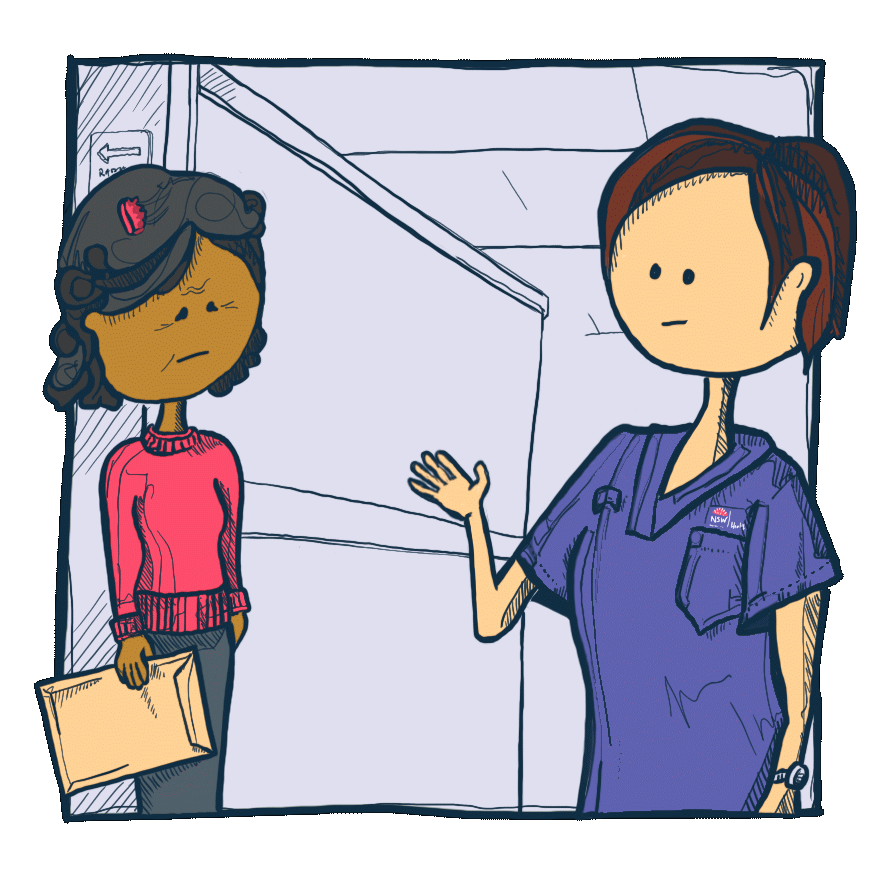
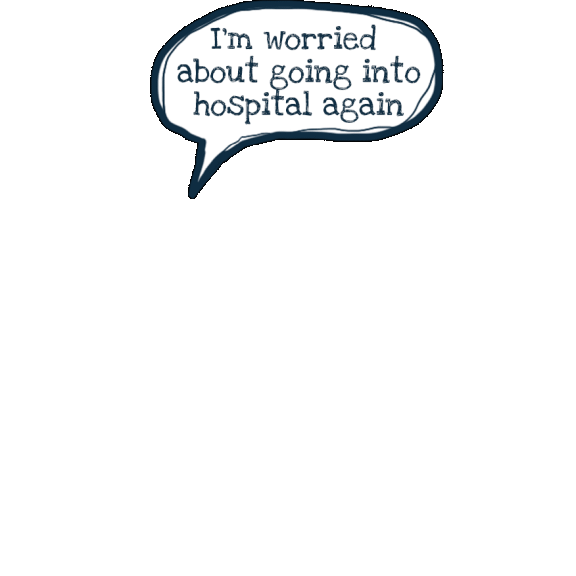





You might try:








Why is this important?
Skills to navigate challenging conversations
Noticing Cues
Cues are hints or clues that people give during conversations. They are a sign to underlying emotion that needs to be addressed. They can be non-verbal or verbal.


Fidgeting


Folding arms


Looking away


Becoming teary


Changes in tone of voice
1. References to future events.
For example:



What might this mean?

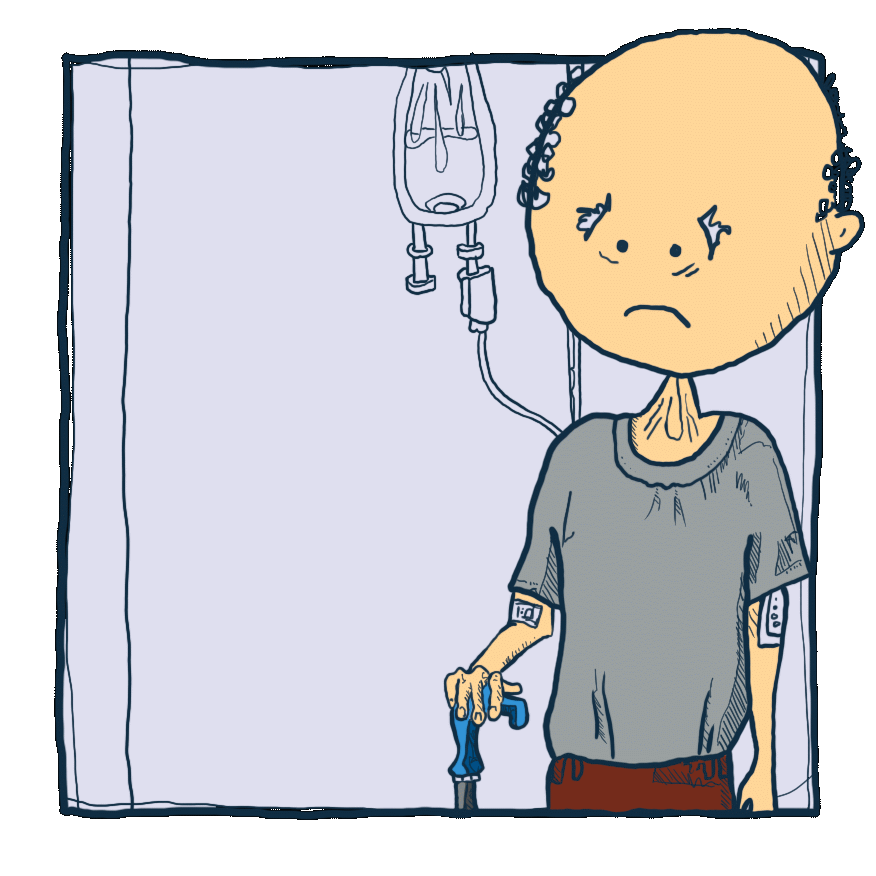

2. References to life-threatening events.
For example:



What might this mean?



3. Loaded emphasis.
For example:
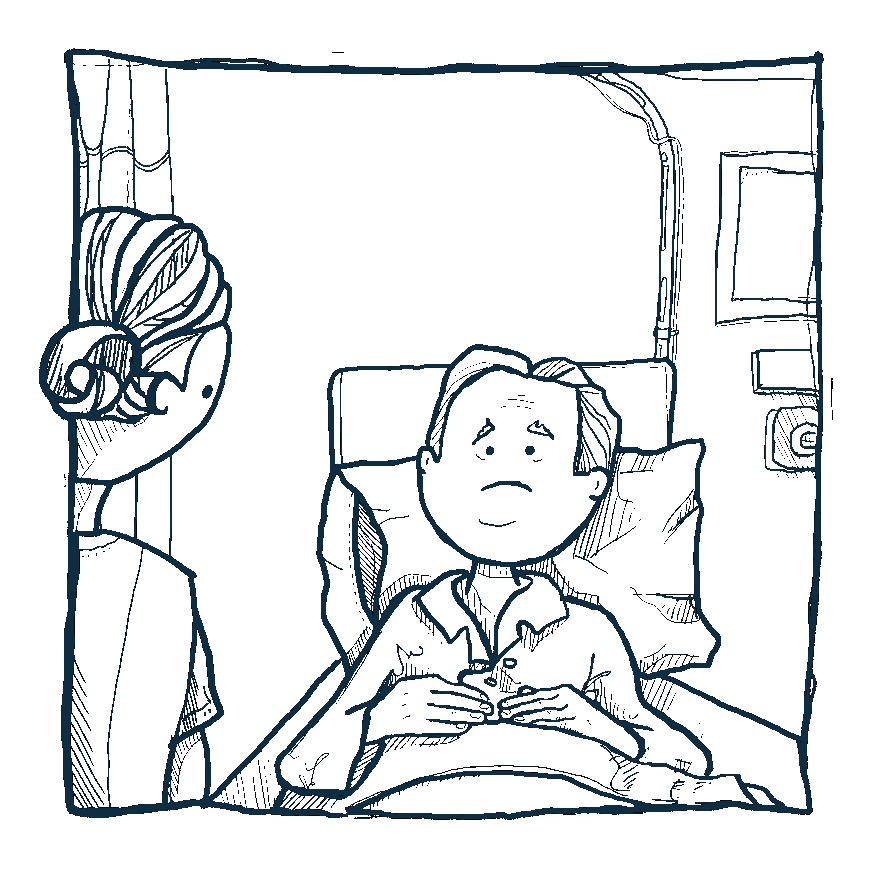


What might this mean?


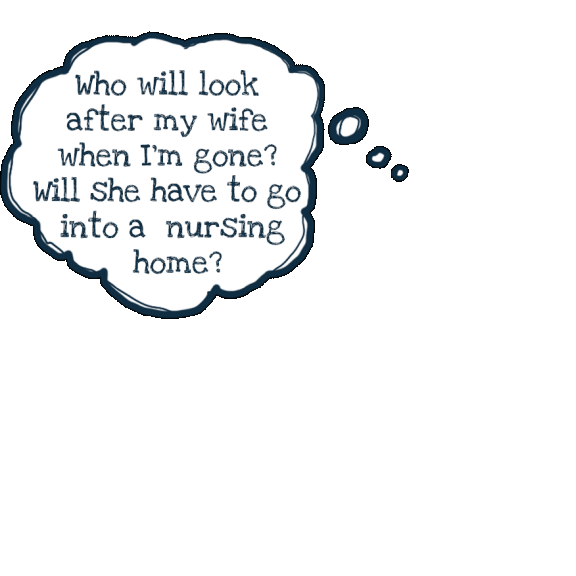
4. Circular conversations
This can be a sign that we have missed some cues that need to be explored before the conversation can progress.
For example:

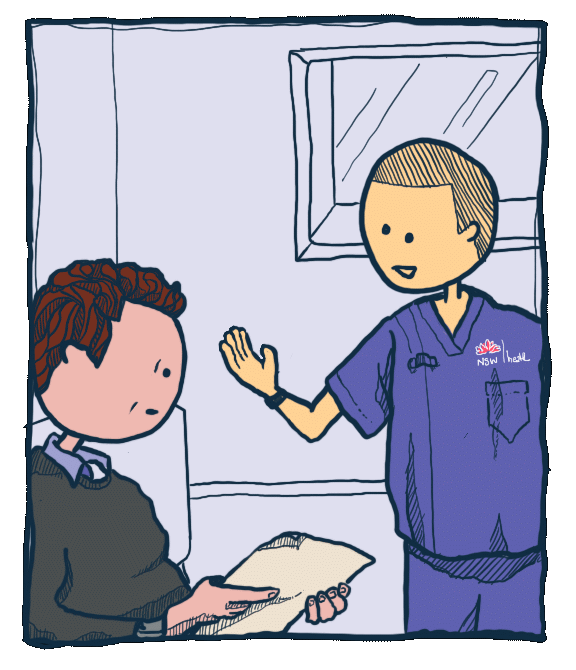
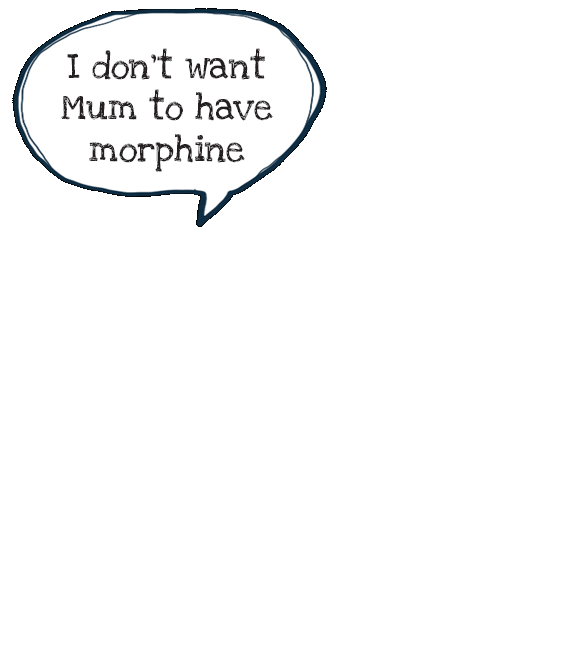
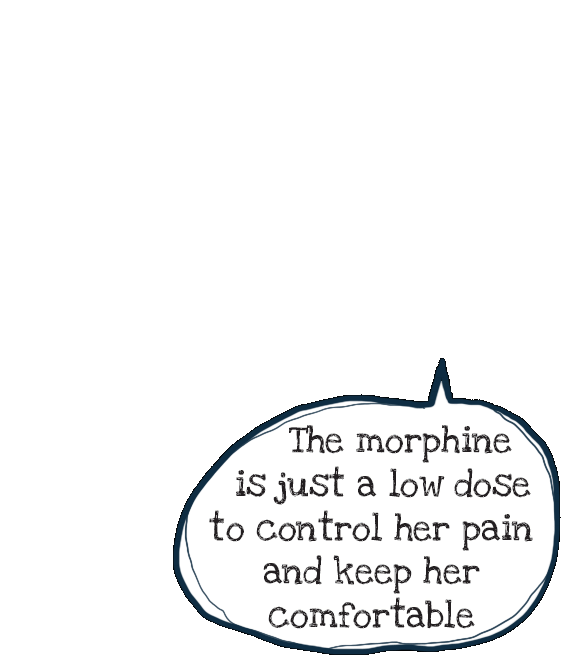

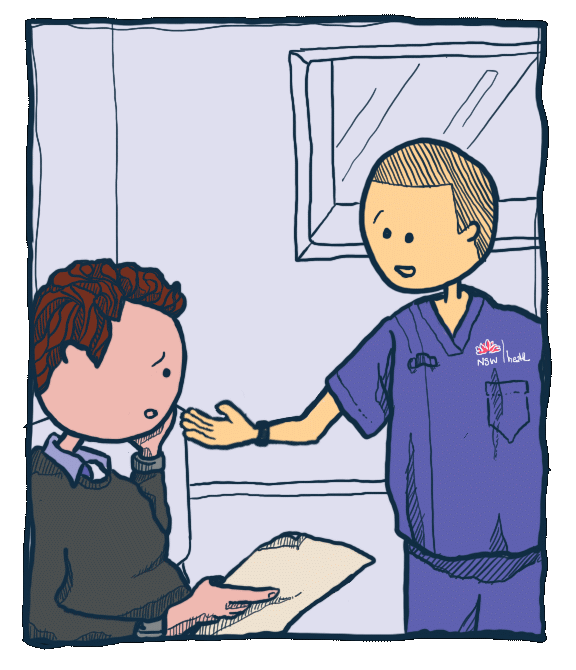
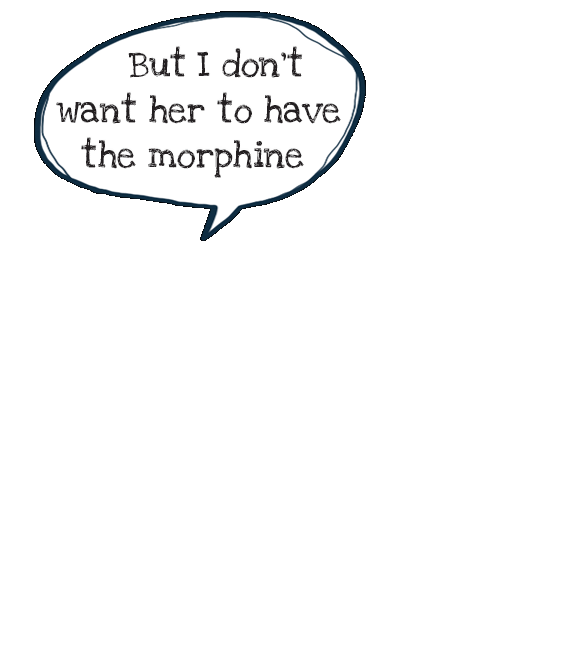
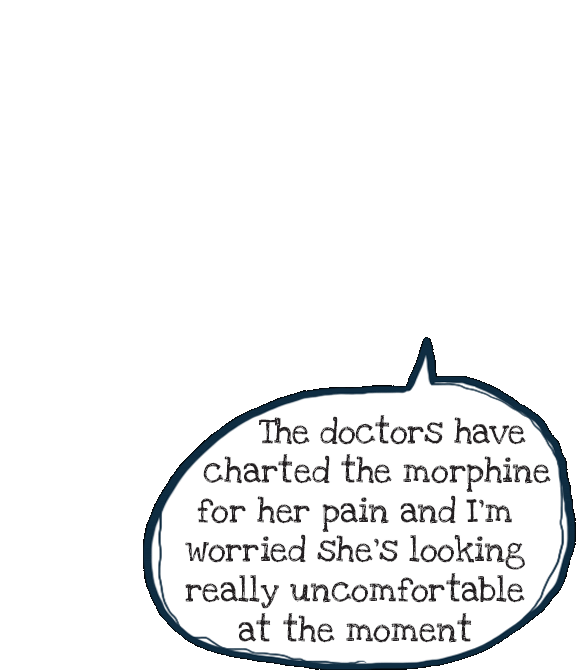

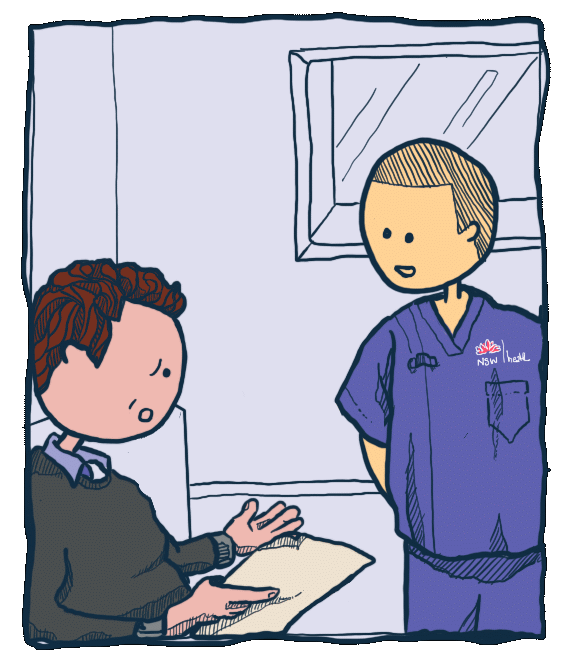

What might this mean?

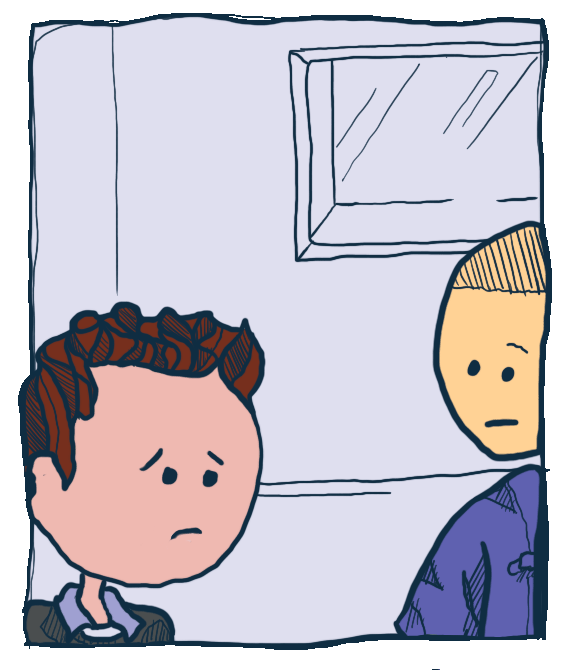
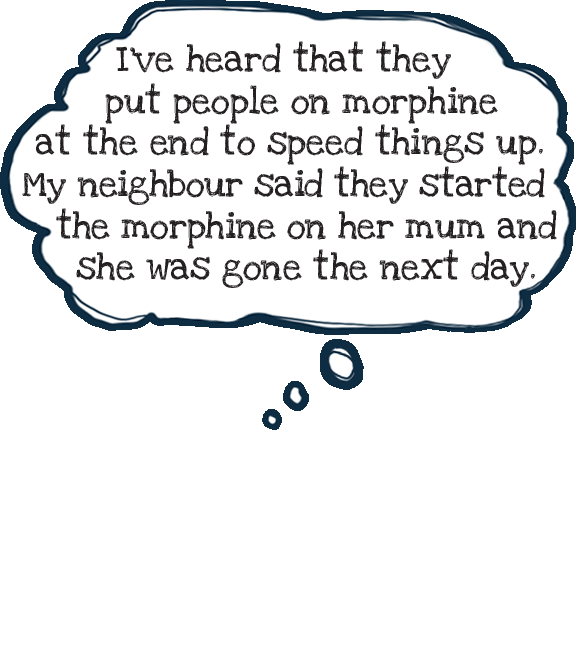

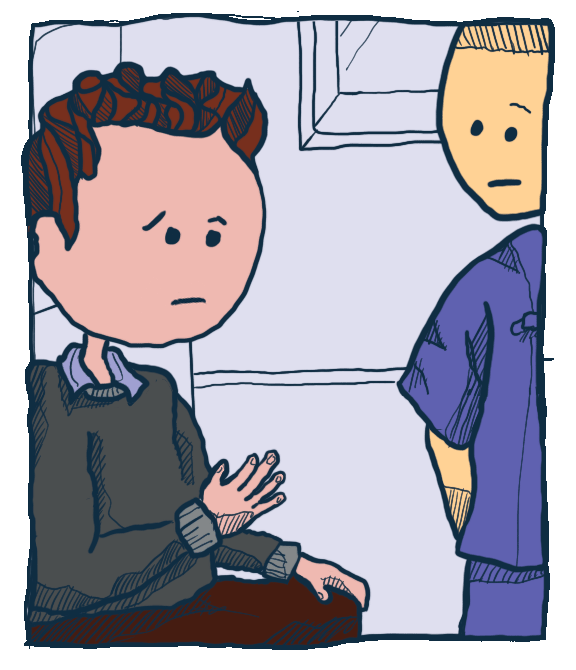

When a conversation is going around in circles, it usually means that an important cue is being repeated by the patient or family because it hasn’t been addressed yet. Exploring the cue generally allows the conversation to move on.
Why is this important?
Skills to navigate challenging conversations
Responding to emotion
Our patients and their families face many difficult situations which can bring on strong emotion. It can be tempting to avoid it, try and reassure the patient or respond with facts. Responding by addressing the emotion itself is much more effective.
Learning to recognise and respond to emotion is a core communication skill that is central to empathic communication. Empathy can be thought of as a two stage process:
- Clarifying and gaining a clear understanding and appreciation of another person’s situation or feelings
- Communicating that understanding
back to the patient in a visible and supportive way.
We can use ask – tell – ask, tell me more and our skills in recognising cues to try and understand the other person’s situation and emotions. The following skills help us communicate our understanding back to the patient.
Nonverbal communication skills are a powerful way of responding empathically to our patients and their families.
Key nonverbal skills we can use when our patients are emotional include:


Silence

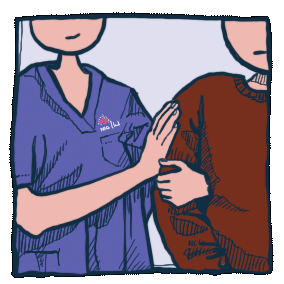
Positioning and posture

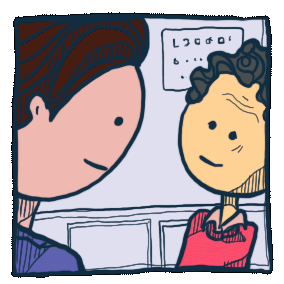
Facial expression and eye contact
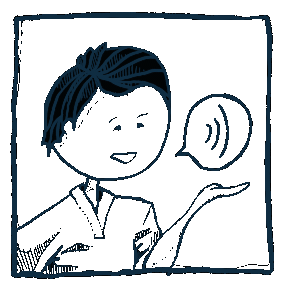

Tone of voice


Touch
The N|U|R|S|E acronym gives us a set of tools to verbally respond to emotion.
Name the emotion as a suggestion or hypothesis
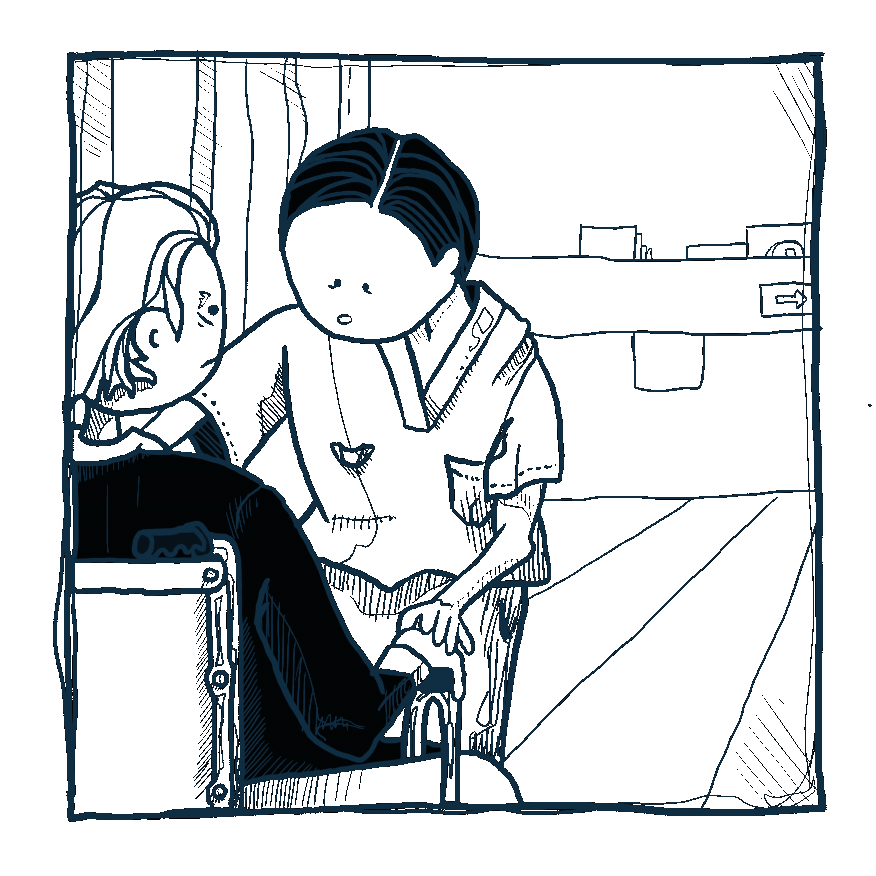



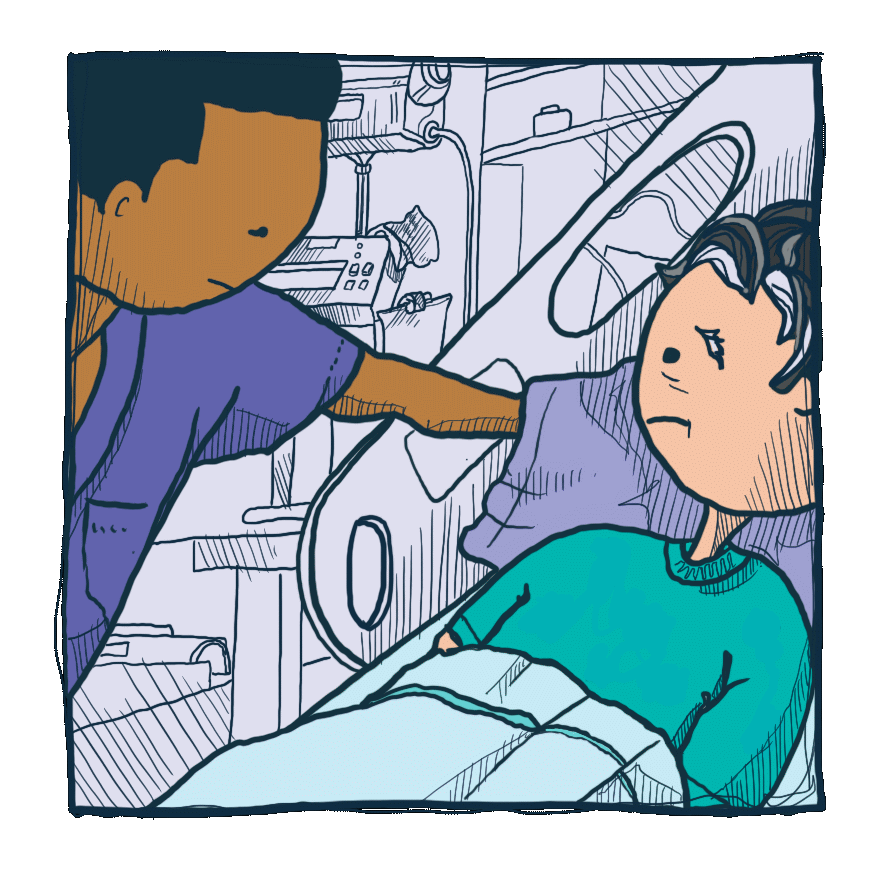

Try to Understand the patient’s perspective or experience




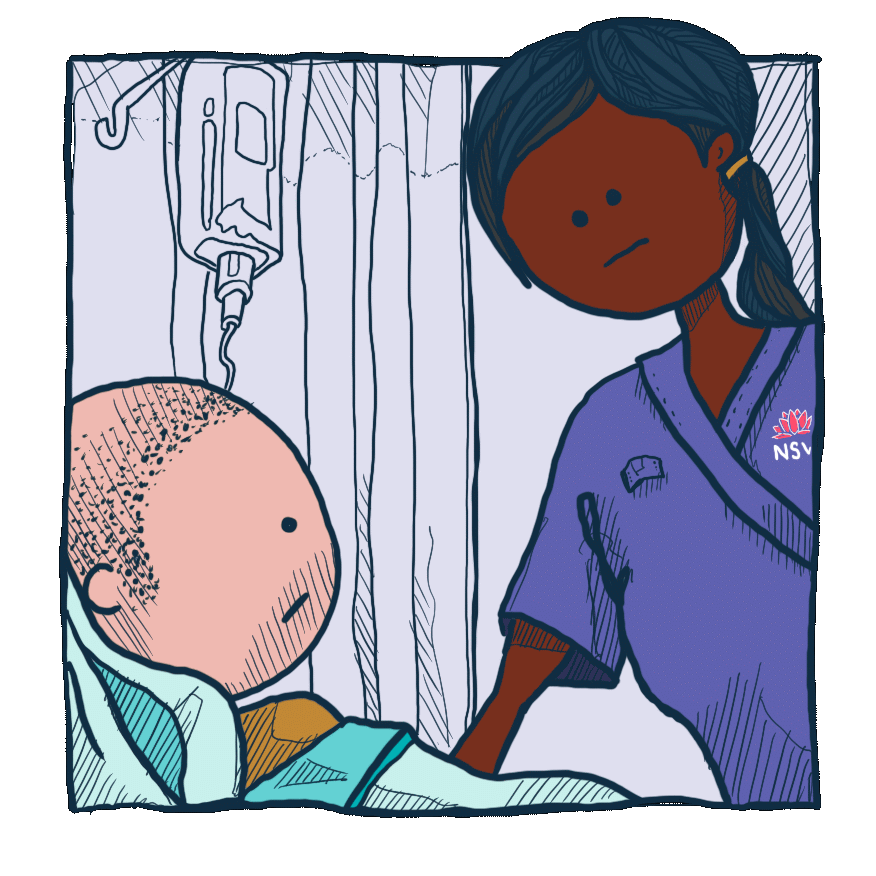

The N|U|R|S|E acronym.
Choose the skills which are most appropriate to the conversation you are having.
Use Respect statements to verbalise what the patient or family has done well

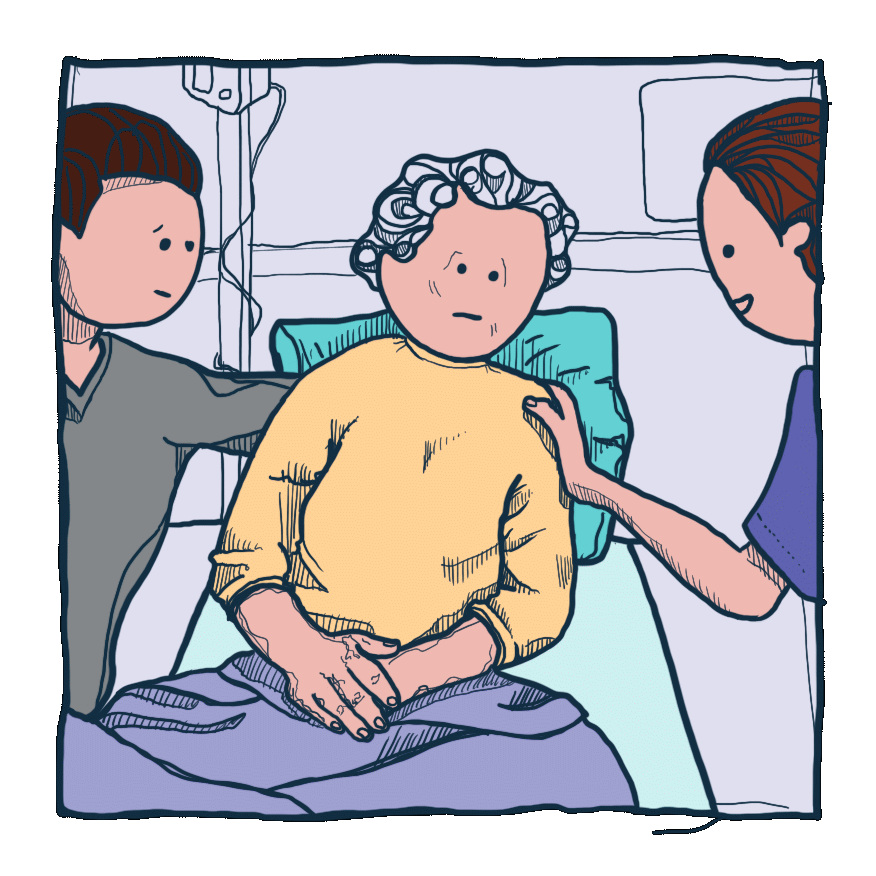


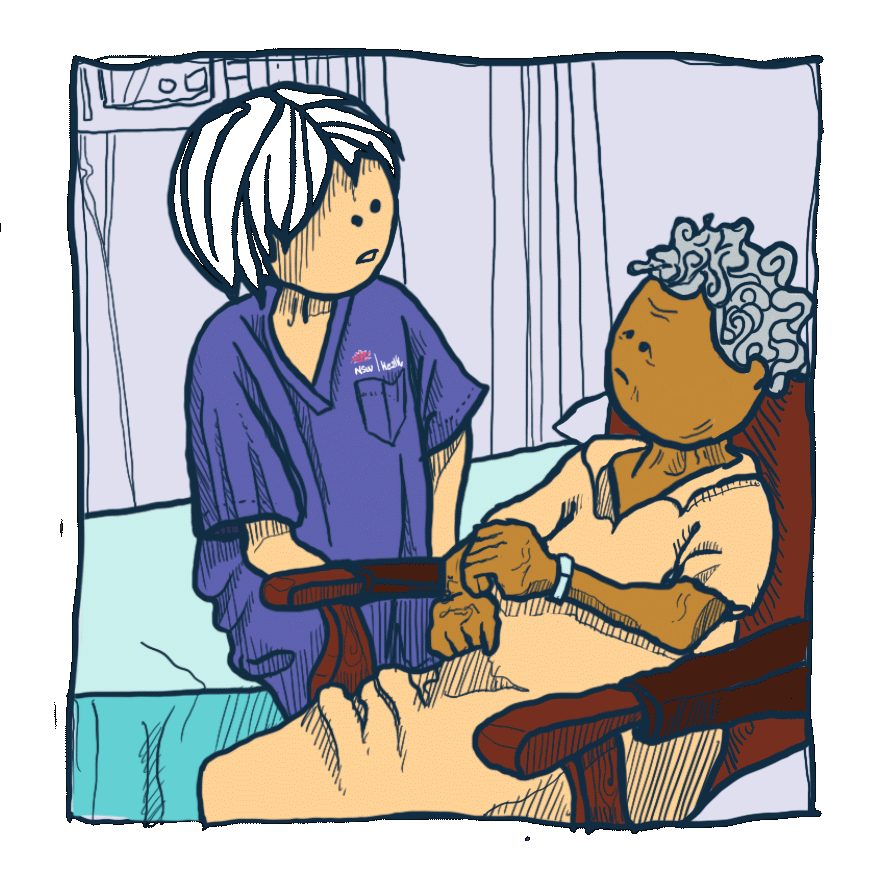
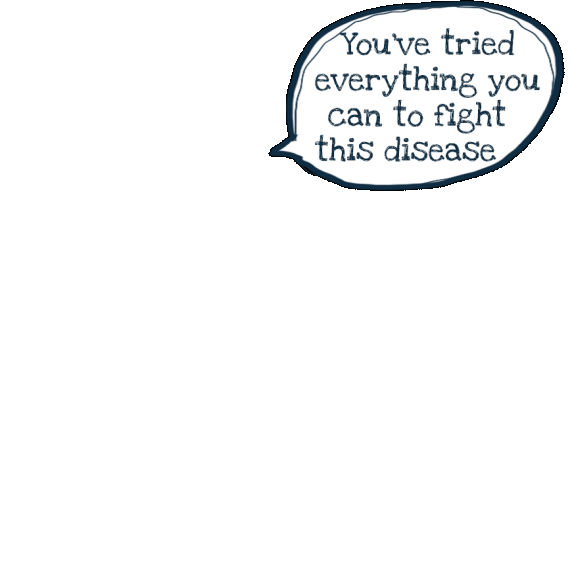
Use Support statements to emphasise that they won’t be alone
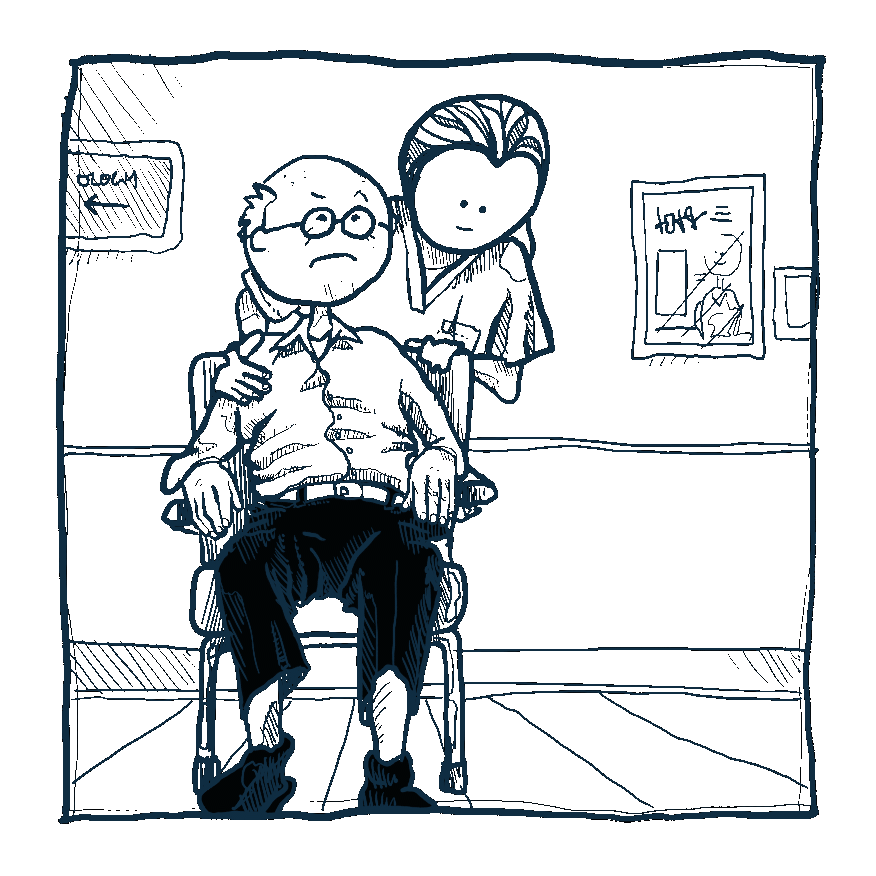
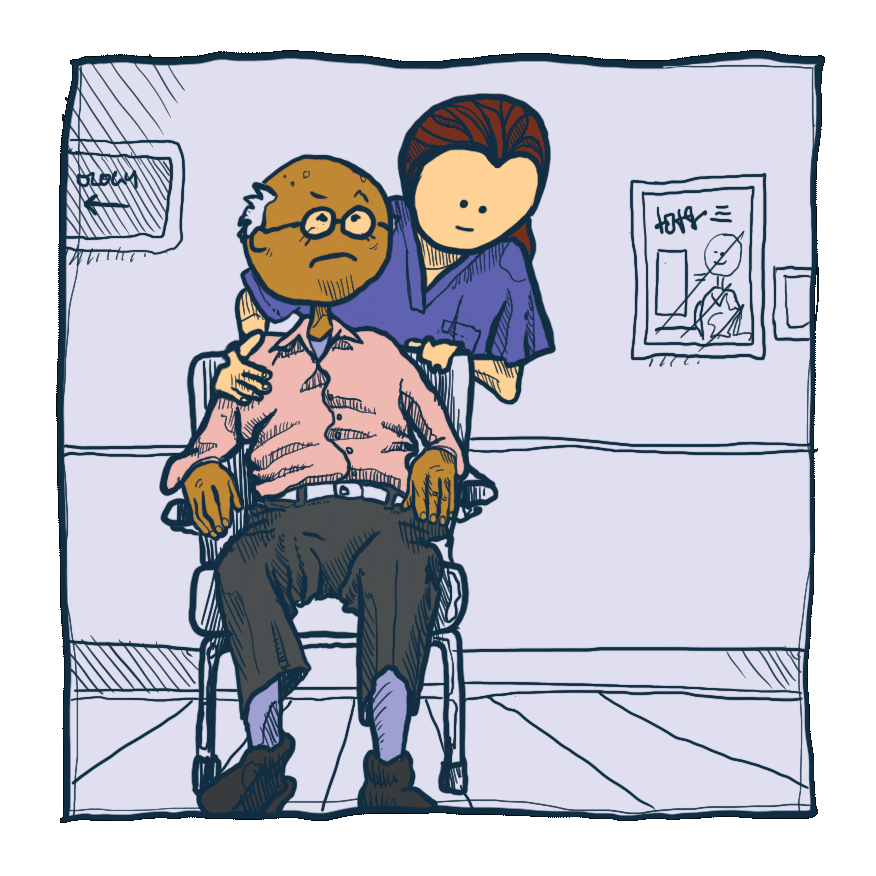
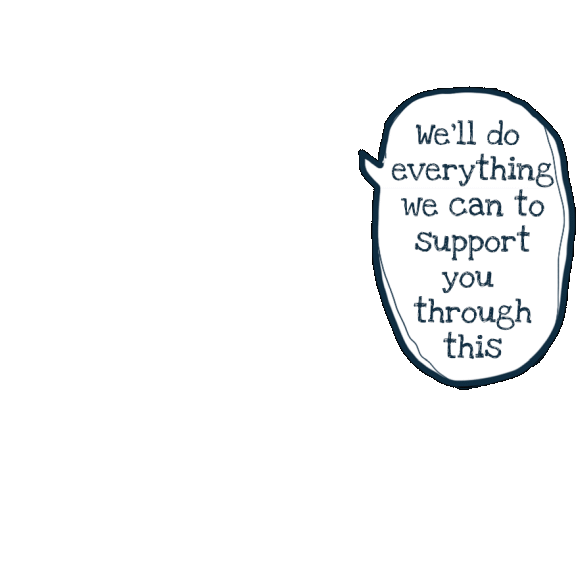

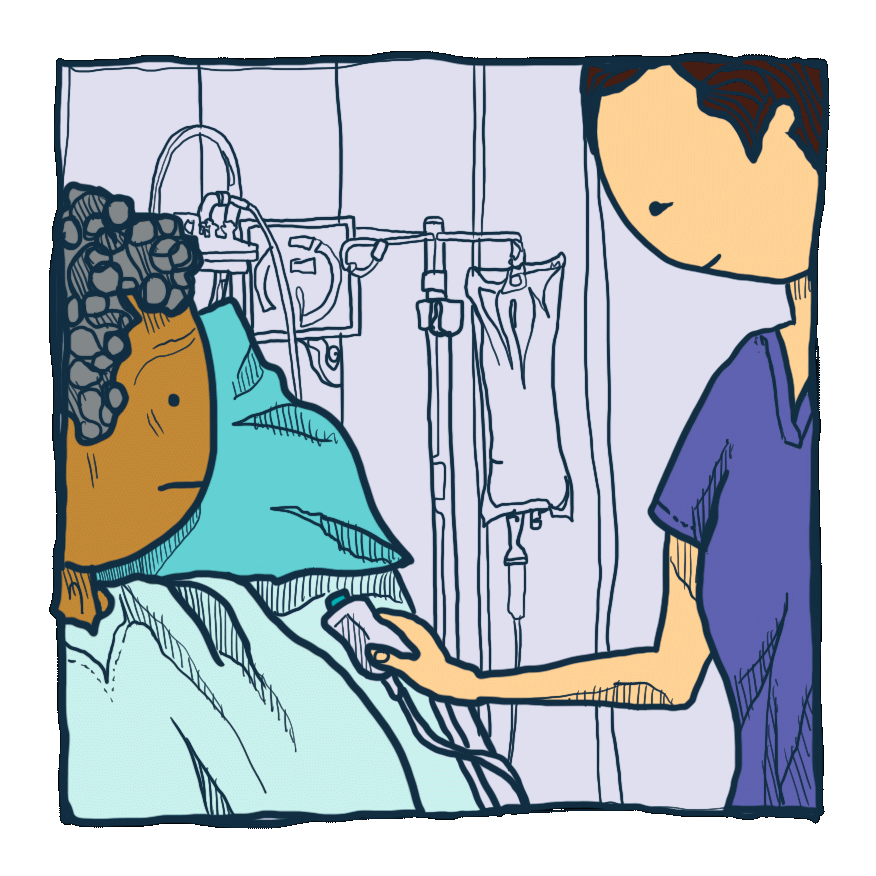
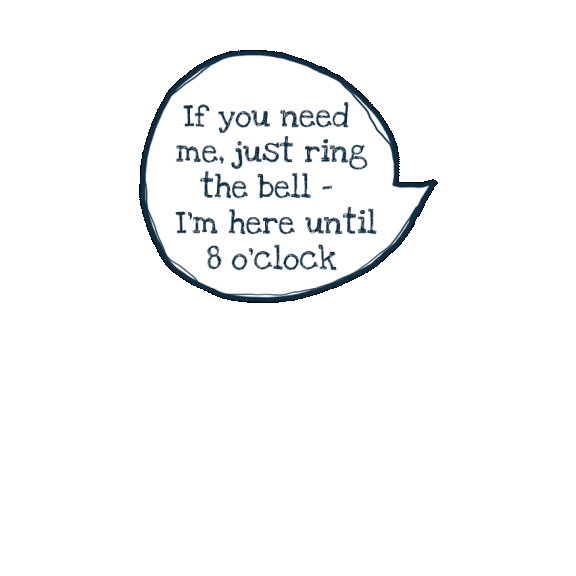
The N|U|R|S|E acronym.
Naming, Understanding, Respecting and Supporting creates the space to Explore.
Explore if you’re not sure what is going on emotionally
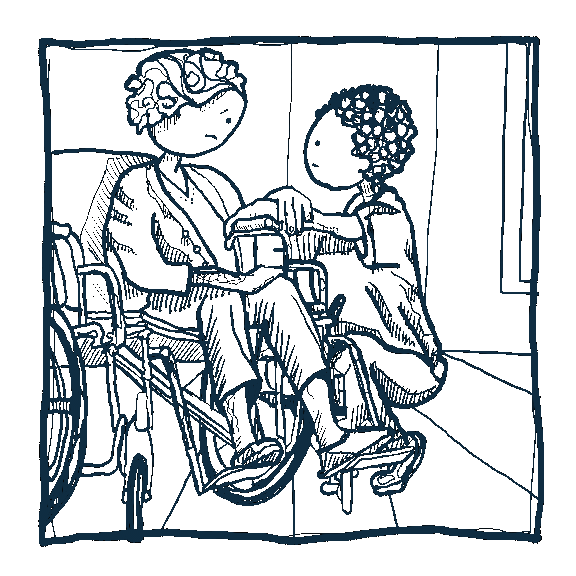
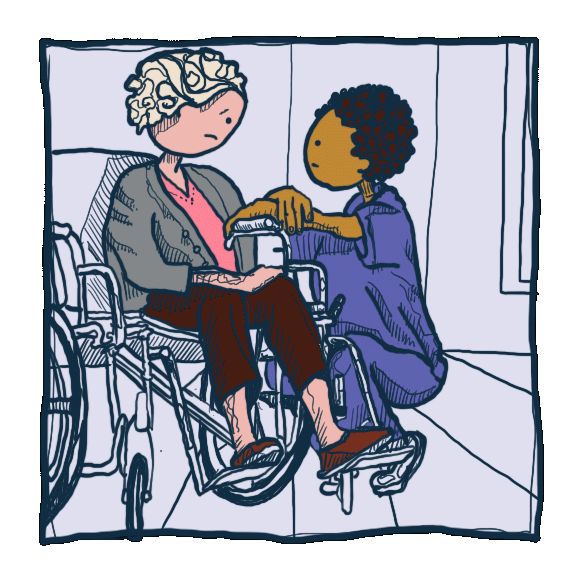


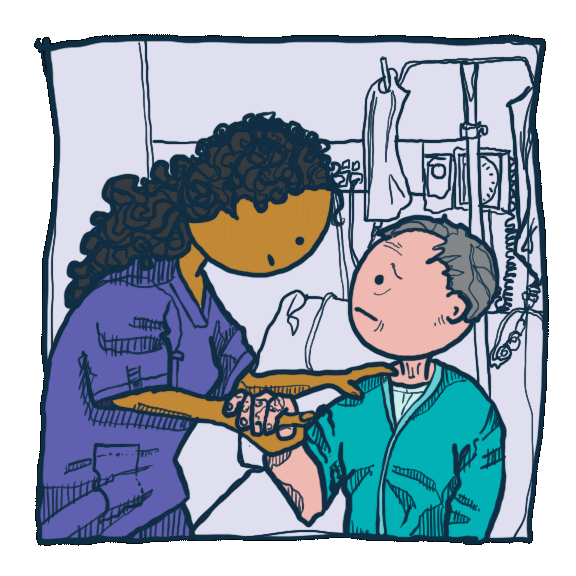

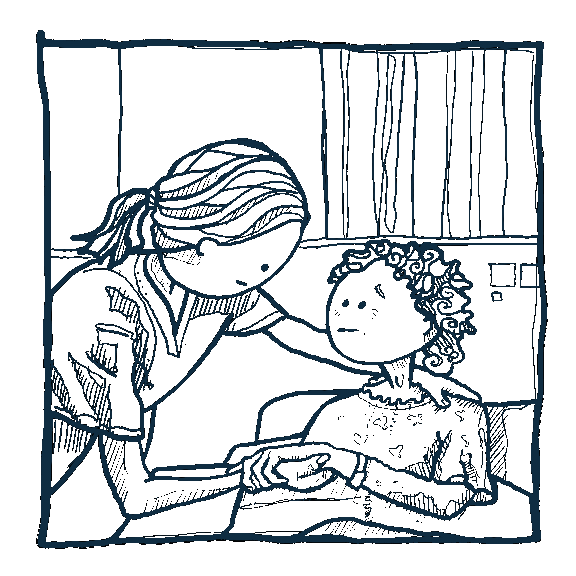
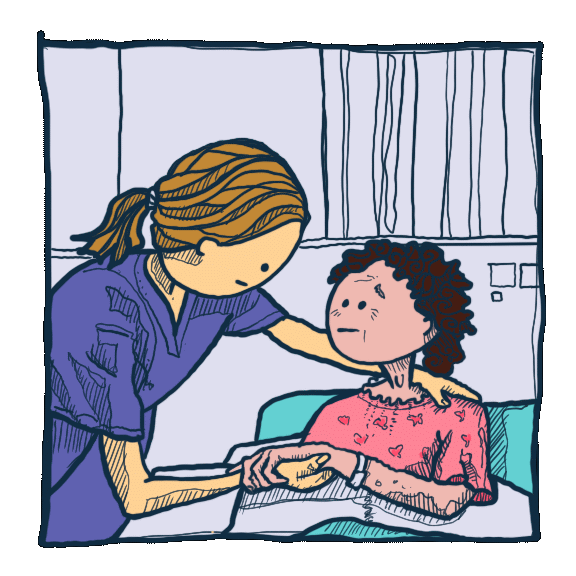

What do we think we know?
The NURSE mnemonic
Here's a chance for you to practice at linking phrases to the skill they demonstrate in order to improve your understanding of the NURSE mnemonic.
Roll your mouse over the question marks and choose the skill that best matches the following NURSE statements
"Tell me what's going on for you"
"Sounds like it's been really frustrating"
"We’ll be here with you through this – you don’t have to do it alone"
"You've done a wonderful job looking after your mum at home for so long"
"There's a lot happening"
"You look worried"
"Sounds like you've had a difficult few weeks"
"You've tried so hard and done everything we've asked of you"
"Tell me more about what's worrying you"
Once you have made all nine selections, use the link below to check your answers.
Looks like you have a few answers to refine there. Just click the button below to make new selections.
Looks like you got the whole lot correct! Well done. Let's move on to the scenarios.
Voluntary Assisted Dying
Talking about Voluntary Assisted Dying (VAD)
In NSW, all healthcare workers are allowed to answer questions and provide information to a patient who initiates a discussion about voluntary assisted dying provided they feel comfortable that it is within their scope of practice. Patients may raise VAD with the nurses involved in their care and being able to explore this issue with our patients, if you are comfortable to do so, is an important part of providing care. If you are not comfortable, make sure you let your senior know so they can follow up with the patient and the appropriate clinicians. Patients often raise VAD because of physical or existential suffering and we can use the skills covered in this resource to explore the reasons they are considering VAD before we refer on to the most appropriate person to take the conversation further.
Practical examples
Three Scenarios
You will now watch 3 videos which illustrate how these skills can be used in a clinical context. In each scenario, the nurse is faced with a challenging conversation around end–of–life issues and uses the skills we have discussed to navigate that conversation. Interactive questions follow each video to help you think about how the skills were used and what impact they had on the interaction.
As you watch the videos, think about how you could use these skills in your own practice.

Scenario 1
Amanda and Mike
In this video, Amanda questions Mike about the treating team’s decision to cease her mother’s intravenous antibiotics and fluids. Mike quickly realises that this decision has not been discussed with Amanda. As you watch the scenario, think about the communication skills that he uses to explore Amanda’s understanding of the medical situation and respond to her emotion and how they help the conversation. The questions following the video will help you deepen your understanding of the impact of Mike's skills on the interaction. You may find it helpful to take some notes while you watch the video.
Scenario 1
Amanda & Mike
Matching
Mike uses all these phrases in his conversation with Amanda. Match the phrases to the skills that he is using.
Hover over the white circles on the right and when the cursor turns to a hand drag and drop them (see below) over the green outlined circles to match the corresponding skill.
I can see you're really worried about the fluids
That must have been a bit of a shock for you
When was the last time the doctors spoke to you?
Were you here this morning when the doctors saw your mum?
You’ve always been such a great advocate for your mum
Uses a respect statement
('You've always been such a great advocate for your mum')
Asks if Amanda was here this morning when the doctors saw Janette
Tells her he think Janette is a bit more frail this time
Asks when she last spoke to the doctors
Names the emotion
('I can see you’re really worried about her fluids')
Uses an understanding statement
('That must have been a bit of a shock for you')
This has been a really distressing conversation for both Mike and Amanda
Mike is calm throughout the conversation. While Amanda is initially upset that the fluids have been stopped, as a result of the skills that Mike has used she is sad but accepting of the fact that her mum is dying by the end of the conversation and even smiles when Mike offers her a cup of tea.
Amanda is in denial about her mother’s condition and wants to talk to the doctors about restarting fluids.
Amanda is in denial about her mother’s condition and wants to talk to the doctors about restarting fluids.
Amanda thinks her mother is going to recover from this episode of aspiration pneumonia.
Amanda thinks her mother is going to recover from this episode of aspiration pneumonia.
Amanda can see that her mother is dying and doesn’t want her to suffer.
Amanda can see that her mother is dying and doesn’t want her to suffer.
Amanda thinks the doctors are giving up on her mum
Amanda thinks the doctors are giving up on her mum
Yes, as a result of the skills Mike uses, it is clear that Amanda knows that her mum is dying. While Mike is going to ask the doctors to speak to her, it is likely she no longer has concerns about the fluids although she may have other questions for the medical team.
Key learning points
Mike’s first step in talking to Amanda was to address her emotion by naming it rather than try and give her information. His use of silence gave Amanda time to process her thoughts and by sitting down, maintaining appropriate eye contact and adopting an engaged posture he gave Amanda the message that he had time for and was invested in the conversation.
Even though Amanda told Mike she didn’t understand why the fluids had been stopped, when he asked her understanding of the medical situation it was clear that she knew her mother hadn’t improved on the antibiotics. He addressed her concern about the team ‘giving up’ on her mum by another empathic statement rather than information. He then reinforced Amanda’s comment about how much she had deteriorated in the last few months. As a result of Mike’s verbal and nonverbal skills, by the end of the conversation Amanda had changed from being anxious and questioning the decision to stop fluids to sad and accepting that her mum was dying.
In summary
- The first step in a conversation with an emotional patient or family member is to address the emotion rather than give information
- Nonverbal skills are an important part of these conversations: silence gives distressed people time to process their thoughts and sitting down, maintaining appropriate eye contact and adopting an engaged posture sends the message that we have time for and are invested in the conversation
- Even when people are asking to see the medical team, we need to check their understanding of the clinical situation as they often have a good grasp of the medical issues
- We often need to combine skills in giving information with skills in responding to emotion during these conversations to allow them to progress

Scenario 2
Chen and Valerie
In this video, Chen meets Valerie who is angry at having to wait for the medical team to update her on her father’s condition. As Chen talks to Valerie, it becomes clear that Valerie’s frustrations are not actually her major concern. As you watch the scenario, think about the communication skills that Chen uses to explore Valerie’s understanding of the medical situation and respond to her emotion and how they help the conversation. The questions following the video will help you deepen your understanding of the impact of Chen's skills on the interaction. You may find it helpful to take some notes while you watch the video.
Scenario 2
Chen & Valerie
True or False
Chen asks Valerie if she’s spoken to the doctors recently.
Which of the following are true?
Valerie is expecting Stan to recover and is shocked to see him so unwell
When Chen asks Valerie if she’s spoken to the doctors recently, Valerie tells her that she has been told that the stroke is severe and Stan may not recover.
That sounds really frustrating
That must have been so hard to hear
It’s so hard juggling everything, isn’t it?
Have you spoken to the doctors recently?
Unfortunately the doctors are seeing some really unstable patients at the moment and running behind
It took Chen 5 minutes to have her conversation with Valerie
As a result of the communication skills that Chen has used, this challenging conversation has only taken 5 minutes.
Uses an understanding statement (That must have been so hard to hear)
Asks Valerie if she’s spoken to the doctors recently
Explores when Valerie last saw her father
Tells Valerie the doctors are seeing some unstable patients and running behind
Uses an understanding statement (It’s so hard juggling everything, isn’t it)
Names the emotion (That sounds really frustrating)
Key learning points
Chen demonstrated again that the first step in a conversation with an emotional family member is to address the emotion rather than give information. Even though Valerie gave the impression that she needed a medical update at the start of the conversation, when Chen checked her understanding it was clear she knew how serious the situation was.
By exploring Valerie’s verbal cues about being busy with work and wishing she’d made more of an effort, Chen was able to find out Valerie’s main concerns and address them. Chen’s use of verbal and nonverbal skills allowed Valerie to express her guilt and grief and by the end of the conversation, Valerie had changed from being angry to being tearful and accepting.
In summary
- The first step in a conversation with an emotional patient or family member is to address the emotion rather than give information
- Nonverbal skills are an important part of these conversations: silence gives distressed people time to process their thoughts and sitting down, maintaining appropriate eye contact and adopting an engaged posture sends the message that we have time for and are invested in the conversation
- Even when people are asking to see the medical team, we need to check their understanding of the clinical situation as they often have a good grasp of the medical issues
- Following verbal cues helps us to get to the key issues concerning our patients and their loved ones
- Anger in these situations is often driven by other underlying emotions, in this case guilt and grief

Scenario 3
Ed and Stephanie
In this video, after Stephanie notices that her patient Ed is unusually anxious, he reveals that he is thinking about voluntary assisted dying. Stephanie takes the opportunity to explore the reasons behind this with Ed. As you watch the scenario, think about the skills Stephanie uses to explore Ed’s concerns and respond to his emotion and how they help the conversation. The questions following the video will help you deepen your understanding of the impact of Stephanie's skills on the interaction. You may find it helpful to take some notes while you watch the video.
Scenario 3
Ed & Stephanie
Matching
Stephanie has used all these phrases in her conversation with Ed. Match the phrases to the skills that she is using.
Hover over the white circles on the right and when the cursor turns to a hand drag and drop them (see below) over the green outlined circles to match the corresponding skill.
Ed, you seem really anxious
You’ve been through a very terrible time recently
It’s really important you told me that
Things must be really tough for you to be thinking about that
Can you tell me what’s happening for you?
Explores Ed’s reason for contemplating voluntary assisted dying (‘Can you tell me what’s happening for you?’)
Uses an understanding statement (‘You’ve been through a very terrible time recently)
Uses ‘tell me more’ (‘Can you tell me about your concerns?’)
Uses a respect statement (‘It’s really important you told me this’)
Names the emotion (‘Ed, you seem really anxious’)
Uses an understanding statement (‘Things must be really tough for you to think about that’)
Stephanie needed a full understanding of the process of voluntary assisted dying before she explored the reason Ed had been thinking about it.
Questions about voluntary assisted dying are often prompted by physical or existential suffering and the first step in talking about VAD with a patient is to explore this. This does not require a detailed understanding of the VAD process.
Key learning points
When Stephanie saw Ed’s verbal and nonverbal cues (hesitant answers to her questions, facial expression and fidgeting) she named the anxiety and asked him to tell her about his concerns. By sitting down, maintaining appropriate eye contact and adopting an engaged posture she gave Ed the message that she had time for and was invested in the conversation and her use of silence gave Ed time to speak about a very difficult topic. When Ed mentioned VAD, Stephanie’s first response was an empathic statement. She then explored the reason he had raised VAD, validated his fears and told him how important it was that he’d told her his thoughts before suggesting a practical next step of referring to palliative care.
In summary
- If we notice nonverbal emotional cues, it’s important to explore them
- If you are comfortable to do so, the first step when a patient raises VAD is to explore the reason behind this
- Patients often raise VAD because of physical or existential suffering and exploring this further if you are comfortable to do so can guide us as to the most appropriate next steps in their care
- Patients often raise VAD because of physical or existential suffering so we often need to combine skills in giving information with skills in responding to emotion during conversations around VAD
Let's review the learning
A final word on improving your communication skills
We face many challenging conversations in healthcare which can be emotional for us as well as our patients. Developing our communication skills helps us communicate with our patients effectively and efficiently and is rewarding for us as healthcare workers. Remember that when you try a new skill it can feel awkward or ‘clunky’. This is a normal part of learning. Keep practicing and you will find that these new skills become a natural part of your conversations with your patients and their loved ones.
Final reflections
The next steps
The next step is for you to practice these skills with your patients. Use this resource as a guide and think about how you might put the examples in your own words if the ones included here don’t work for you.
We'd love your feedback!
EVALUATE THE MODULE
Please take a moment to review this module. This will help us to assess the effectiveness of our developed training as well as in the development of future modules.
 Within each section you may be presented with a sequence of material that you can move through by clicking on the right-pointing arrow as shown here, which always appears bottom-right of the screen. These moving forward arrows will appear once you reach the end of each portion of the section.
Within each section you may be presented with a sequence of material that you can move through by clicking on the right-pointing arrow as shown here, which always appears bottom-right of the screen. These moving forward arrows will appear once you reach the end of each portion of the section. At the end of each section a down-pointing arrow such as the one shown here appears allowing you to move to the next section.
At the end of each section a down-pointing arrow such as the one shown here appears allowing you to move to the next section.